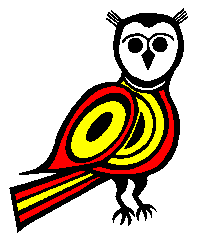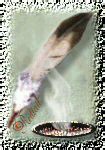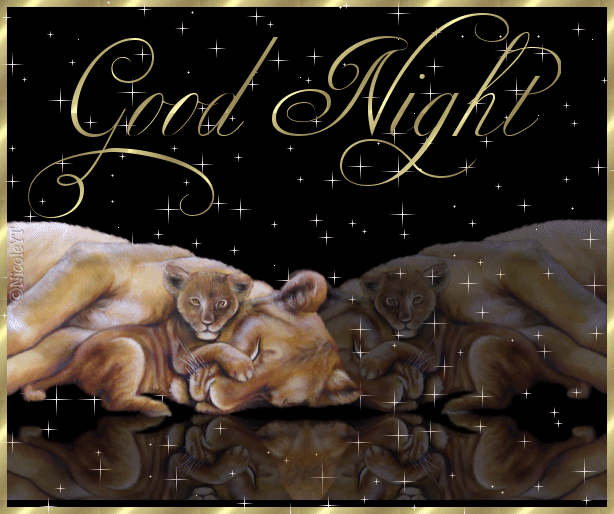|
Main
Menu
External
Pages
|
Earth People
Magazine
Volume
1 Number 1
Now
Playing: 'Tribulation Day'
By: Freedom
From CD:
Complete Unity
Contact
Sitting Owl for a copy

Contents
Thanks to James
D. of Sointula Canada for the Orca graphic on front cover.
Other graphics

 
Donations
If you would like to make a donation to Sitting Owl
please use this button.
A MEANING FOR LIFE?
People say
that what we are seeking is a meaning for life.
I don‘t think that’s what we are really seeking.
I think what we are seeking is an experience of being alive,
so that
life's experiences on the physical plain
will have resonances within
our innermost being and reality,
so that we feel the rapture of being
alive.
By:
Joseph Campbell
Sitting Owl's
Introduction
Welcome
everyone to the first edition of ‘Earth
People’ magazine.
The
purpose of this publication is to bring people of all races and of all
cultural backgrounds together, to share their experiences and
knowledge, so that we can all relearn how to feel the rapture of being
alive, and live harmoniously with our earth mother and all the life
that she supports.
As it is
important to me that the magazine is always of interest to you, I
would appreciate any feedback regarding the types of articles that
interest you.
I
chose the name ‘Earth
People’,
because I believe it sums up the way we must all live for there to be
a future for this planet.
Wallace
Black, in his book ‘Black Elk - The Sacred Ways of a Lakota’, says
that Lakota, in their language, means ‘peace’. And he refers to
their way of living as the ‘Earth People Philosophy’, which is
much the same as what has been termed ‘The Perennial Philosophy’
or ‘The Way of the Shaman’.
I have
found that a true shamanic experience, which can at times be
frightening and yet also ecstatic, brings an inner balance and knowing
about life rather that a belief. It also brings a sense of peace and
bliss, which is your ‘true being’, that comes only when you can
live every passing moment without being influenced by any fears,
desires, or any social duties to live any particular way. It is the
life that you and the creator intended.
According
to Wallace, earth people are, all humans who live the fundamental,
spirit/nature based way of giving sacred reverence to all things at
all times. Earth people are steadfast and honest; they know that
everything is a circle as created by The Great Spirit, Grandfather,
God, or any other name that refers to the creator of all things.
While
I often refer to the knowledge and wisdom of the Native Americans, as
a shaman, I am fully aware of the connectedness of all things, and
understand that the same knowledge can be found in all the different
human cultures, as long as your heart is full of love and open to the
song of the universe. For as Joseph Campbell, the famous mythologist,
has said: “God
is everywhere in his work, including the computer.” But this of course does not make the computer God
any more, or less, than anyone/thing else in this created universe.
Of all the
countless people, and spirits, I would like to thank for getting this
publication created, I would like to send a special thank you to Raven
Wi’ in Alaska for giving me the inspiration and permission to use
articles from her magazine ‘Raven’s Reflections’. In this issue
I have reprinted the following articles from her Nov. - Dec. 1999
issue: ‘Drumming in the New Millennium’ by Ma Anand Suraj, and
‘Smudging with Sacred Herbs’ By Raven Wi’. Raven has told me
that she plans to be coming back to Australia in April 2000.
Bud
Johnson in Pipestone Minnesota is the president of ‘The Keepers of
the Sacred Traditions of Pipemakers’ and he has expressed an
interest in coming out here to conduct pipe-making classes. So all you
budding shamans should contact me so that I know who and how many
people are interested
As
publisher and editor of the magazine I am available any time, and as a
shaman, that means day or night.
Now
sit back and enjoy this first issue of ‘Earth
People’.


Back
to Contents
Top
of Page
Report on Dreamweave
Cultural Festival
Nov. 13 to 14 1999

Dreamweave was the vision of Barbara
Gibson-Thorpe of the Wiradjuri tribe in N.S.W. She is also known as
Dolphin Lady by elders of the Raukawa tribe of New Zealand; Whispering
Corn by the American Lakota; and Wathungary by elders of Northern
Territory.
Barbara’s vision of Dreamweave came after attending a mental health
conference, from an Aboriginal and Maori perspective, in Melbourne. As
she watched the Koori and Maori welcoming ceremonies she realized that
this was the beginning of Dreamweave, ‘The Family Web’ of the
human race that has to be brought back together again.
On behalf of all who attended I wish to thank the sponsors and
supporters, being the Dja Dja Wrung People, Wathungary, and Casurina
Healing Sanctuary at Maldon where it all happened.
Personally, for me the weekend gave me a lot of purpose for my
spiritual activities and knowledge, as I was beginning to think that
no one understood or wanted to hear my message. The events of the
weekend have also allowed me to accept my title of ‘Shaman’ and
‘Carrier of a Sacred Pipe’.
When I arrived on the Friday afternoon I walked around the property
and knew it was sacred ground, but it looked dry, old and dieing,
except for the newly forming groves of planted trees.
Evening and night time brought those who were camping, together around
the fire where the energy warmed from the entertainment and comical
antics on the didgeridoo by Gnarnayarrahe.
On the Saturday the opening ceremony began with a traditional
Aboriginal welcoming dance by Gnarnayarrahe followed by a smudge from
the green leaves on the fire. Once everyone had gathered at the stage
area the wind blew fiercely, testing everyone’s patience, without
reaction. We finished with a group toning, using only vowel sounds,
and thus bringing the energy of the whole gathering of people into one
mind and one consciousness.
When I went back to my car after this ceremony, I noticed that my very
special eagle feather, which I had found right in the middle of my
medicine wheel, had blown out of my hat.
However I realized that I had already got the message from the
feather, so I hoped that it might be found by someone who really
needed some eagle medicine. It was as if my letting go of that feather
started a flood of ‘Give-Aways’ coming back to me, that stated
when Raven Wi’, in return for a copy of an article I had written,
gave me a copy of her magazine, some white sage, and a wild turkey
feather, which is used as an accessible alternative to an eagle
feather and is considered just as sacred. I cannot list all the gifts
I was given here, because there are too many people I would like to
thank.
Saturday night saw Gnarnayarrahe put on his famous ‘Black Elvis’
act. He truly is a storyteller and entertainer of extraordinary
talent. Sunday morning saw the men and women separate to the
designated groves containing a sacred labyrinth and medicine wheel. Of
course I cannot vouch for what happened with the women but after the
men had spent some meditative time walking their labyrinth, we were
kept informed and entertained by Gnarnayarrahe with his sacred story
telling. It was here that I met with a friend I hadn’t seen for
twenty years. The surprises that our Creator gives just never cease.
After lunch everyone again gathered for the elders’ speeches and
presentation of gifts for them. The humbleness of these elders, who
were mainly women, was inspirational.
Then before we broke, there was a special request from Chris, who also
lives on the property. He requested that the elder, who is caretaker
of that area, bless the piece of sacred pipestone that had been handed
to him previously. Chris also presented a tomahawk that he had made,
and requested a ceremony to ‘Bury the Hatchet’ between the white
and black races.
After that ceremony, I went with John, another shaman I had just met,
and his wife to have a look at the piece of pipe stone. The energy in
Chris’s cabin was so powerful that even an insensitive brick like
myself had a sensation of having been scalped.
As the group in the cabin grew to about ten very normal, humble, but
awake, people, I could no longer resist our Creator’s intention for
me to hold my first group pipe ceremony around the piece of pipe
stone, that when made into a pipe will become, the national pipe
representing Australia.
I was very nervous with a bad case of the shakes until I connected the
two parts of the pipe to begin the ceremony. I must add that all
sacred pipes are connected to every other pipe as there is only one
place in the world you can get the stone.
All I can say is thank you Creator for the privilege of being alive at
this time and being a part of such a powerful healing festival, and
thank you Barbara for sharing your dream.


Back
to Contents
Top
of Page
Dearest Granny
By:
Rani Simone
|
I know I
never saw you much
But I knew that you were there
I love you so eternally
And I will always care
I was to little to understand
Where you went and why
And why you never said you're leaving
And why you never said goodbye.
I’m 'sorry that I was so rude to you
And if I ever made you cry
But I know now that you watch me
From your heaven way up high
I see you now, your glowing face,
Your up and busy style
But you always had time for family
And that I greatly admire
Now I understand why
You left without a kiss
And may your soul be forever free
But here it will always be missed
I
love you Granny
From your loving granddaughter,
Rani Simone
September 1999
|

|
|

|
Drumming in the
New Millennium
By: Ma Anand
Suraj
“As
We Drum, We Are One” is a theme the All One Tribe Foundation in New
Mexico began to share three years ago of their vision of a global
drumming event to celebrate the new millennium. For thousands, of years,
the drum has been the very heartbeat of community for the world’s
indigenous peoples and has been used for rites of passage and ceremony,
and celebrations of the seasons and cycles of life. At the turn of the
new millennium, we are just beginning to remember and rediscover the
healing power of the drum. The spirit and magic of the drum‘s
universal vibrational language cuts through all ages, sexes, races,
religions and cultures to bring the message of unity and oneness.
Anchorage 2000 New Years Eve Celebration has caught the Wave of the
power of group drumming and is planning a Drumming in the New Millennium
celebration to which you are all invited! Anchorage 2000 plans to bring
together the entire multicultural community of Anchorage to celebrate
our unity and diversity through a yearlong series of community events.
The New Years Eve Night of light Drumming in the New Millennium event
will celebrate drums and percussion from around the world. As Alaska is
the last time zone to turn the millennium, you are invited to join the
Millennium at the Top for an ecstatic celebration of world beat.
Anchorage
2000 has invited Alaska's Whirling Rainbow Centre to share The Mother
Drum at the New Years Eve drumming celebration. Over the last five
years, The Whirling Rainbow Centre, received a dream of building a large
drum that would travel the world with the message of unity, peace and
life. The Mother Drum Project is part of a vision of healing for all the
children of Mother Earth for the next millennium. The drum will belong
to all the children of the earth and will bring the universal
vibrational message of oneness with the theme:
“The
Heartbeat of One Family, One Earth."
The
Mother Drum will be the first universal drum of its kind. This large,
eight foot in diameter wooden, kettle shaped drum, will be designed from
the Mapuchas tribe from Patagonia in South America and Alaska Native
peoples of North America.
Since
the Mother Drum is for all of Mother Earth's children, all the native
and non-native cultures in Alaska are invited to get involved in the
making and first official use of the drum.
The
Anchorage Museum of History and Art has donated space so that the public
can watch the birthing of The Mother Drum unfold. The Mother Drum
building project is scheduled for September through December of 1999. The
museum is also scheduling group drumming circles and drum making events
to get us ready for the big night.
The
Mother Drum will be initiated at a Dawn Dedication Ceremony on Dec. 31,
1999 at the Alaska Performing Arts Centre in Anchorage. Later that
evening, The Mother Drum will be featured and broadcast worldwide as
part of the Anchorage 2000 Night of Light, Drumming in the New
Millennium celebration.
Drums
of all cultures will be invited and school children from all cultures
will participate by making smaller "baby" drums. 'We will be
asking children throughout Alaska to send us their poems, prayers and
intentions for the next millennium. These will be hung as Rainbow Dream
flags from the Mother Drum and travel with her worldwide. Anchorage 2000
expects as many as, 20,000 people drumming at the New Years Eve
celebration. The celebration and the entrance into the new millennium
will be guided by the heartbeat of the Mother Drum. From there, The
Mother Drum will begin her worldwide travels.
Many
prophecies about the healing that would begin on Earth at the turn of
the millennium, was to “begin in the north and create a healing wind
around the world.” The Whirling Rainbow Centre feels that The Mother
Drum Project is part of the fulfilment of this prophecy.
The
Whirling Rainbow Centre is recruiting craftspeople (carvers, skin
sewers, wood workers, drum makers, artists) from the community to assist
us in designing and making The Mother Drum.
To
receive more information on the Anchorage 2000 events contact the
organizing committee at 1-907-258-2525 or check out their website at
www.anchorage2000.com
To
get involved in The Mother Drum Project contact The Whirling Rainbow Centre
at 1-907-688-2226 or email us at akwow@alaska.net
. The web site is:
www.whirlingrainbow.org
- where the drums progress can be watched.
Come
and celebrate with us the Heartbeat of One Family, One Earth for the new
millennium.
Ma
Anand Suraj has worked for over twenty years as an international healer,
counsellor, educator, ceremonial artist, and, drummer. She is the
co-founder and director of The Whirling Rainbow Centre (907-688-2226)
and facilitates a private practice and group work to inspire healing
through creative and expressive art, hands on healing bodywork, shamanic
journeying and soul retrieval, meditation, breath, sound and percussion
and wilderness rites of passage.
The Sacred Pipe
Internet
Unknown Author

Many people
think that the sacred pipe is a symbol of the sacred. It is much more
than that; the pipe IS the sacred, made real. When the bowl and stem of
the pipe are connected, the pipe is awake.
CONSECRATING THE SACRED PIPE
The sacred pipe (called chanunpa, or kanunnawu) may be consecrated in a
medicine wheel, at an altar, or any place that to the pipe bearer feels
is holy. You need to have a smudging mixture (I use sage, juniper, sweet
grass, and cedar, along with some charcoal briquettes to keep the
smudging mixture lit), some old and some new smoking mixture, your
smudging bowl, and either a lighter or matches.
Face west and light your smudge mixture in the bowl. Offer it to the
spirit keepers of the four directions, beginning to the west, to the
heavens and the earth. Move the smoke over yourself, using a feather fan
or wing, to cleanse yourself.
Pass the bowl of the pipe over the smoke, fanning the smoke over and
around it. Do the same with the stem of the pipe. Pass your hands
through the smoke. Lift the bowl in your left hand and the stem in the
right and connect them. This symbolizes the joining of the male and
female energies, heaven and earth, the material and the spiritual. When
they are joined, the pipe is awake.
Pass the pipe through the smoke, fanning it well. Hold the pipe over the
smudging bowl and let it fill with smoke. This allows the Great Spirit
to smoke the pipe first. If you are not going to smoke the pipe at this
time, offer it to the spirit keepers, the earth, sky, the ancestors, and
the spirits, before you disassemble it and put it away. You should never
put the pipe away with the stem and bowl connected.
SMOKING THE SACRED PIPE
Take out an equal mixture of old and new tobacco or smoking mixture from
your bags and a mixing bowl or mortar. The first time you do this, you
may have to guess how much your pipe will hold, and take that much out
of the bags. Just as you did with the smudging herbs, make an offering
with the smoking mixture. Put half of it back in the pouch that contains
the sacred tobacco so that it may never be empty.
Hold the pipe in the left hand, with the stem resting on your left
shoulder. I fill my pipe one pinch at a time. Dedicate each pinch to the
spirit keepers, the moons and/or the totems.
Once you have packed the bowl, face the west, holding the bowl in your
left hand, and the lighter or match in your right hand. Place the end of
the pipe stem between your lips and light the pipe, puffing to ignite
the tobacco. If you are not used to smoking, do NOT inhale the smoke.
How hard you have to draw on the pipe depends on the length of the stem.
The longer the stem, the harder you will have to draw on it. Extend the
stem to the west, holding the bowl in your left hand and the stem in the
right, and invite Yanu the bear, spirit keeper of the west, the
Thunder-beings; Asgaya Galvlati, the Great Spirit to smoke with you, and
share the blessings of the sacred pipe. Take a puff and blow the smoke
to the west. (You may have to relight the pipe several times throughout
the ceremony.)
Turn to the north, extending the stem, and invite Yunsu the buffalo,
spirit keeper of the north, Waziuh, the great white giant to smoke with
you, and share the blessings of the sacred pipe. Take a puff and blow
the smoke to the north.
Turning east, extend the pipe, and invite Awahili the Eagle, spirit
keeper of the east, to smoke with you, and share the blessings of the
sacred pipe. Take a puff and blow the smoke to the east.
Face south, extend the pipe stem, and invite Tsistu the rabbit, spirit
keeper of the south, to smoke with you, and share the blessing of the
sacred pipe. Take a puff and blow the smoke to the south.
Turn west again, and lift the stem to the sky. Offer the pipe to Asgaya
Galvlati. After puffing the pipe and blowing the smoke to the sky,
extend the stem to the ground and offer the pipe to Earth Mother,
Agisegwa. Blow the smoke towards the earth.
Now, extend the pipe over the left and right shoulders, and offer the
pipe to the ancestors, that they may come and share the blessings of the
sacred pipe.
Lastly, revolve the stem in a circle before you and say, "Nunahe
(spirits of all), spirit guardians and allies, totems, come smoke with
me, and share the blessings of the sacred pipe." Take a puff and
blow the smoke into the air.
After the offerings, the pipe should be smoked until it goes out. When
it has gone out, separate the bowl from the stem. Careful, it may be
hot. You may want to place the ashes in your smudge bowl and light them
until they are all burned away.
You may also bury the ashes after the ceremony. Remember that the ashes
are sacred, and must be treated in a reverent manner.
CLEANING THE SACRED PIPE
Clean the pipe before putting it away. You can use a straightened
clothes hanger, and run it through the length of the stem. The pipe
should also be cleaned thoroughly, both shank and bowl. You can use pipe
cleaners to do this. Remember that the pipe is sacred, and the cleaning
must be done in a reverent manner.
At Dancing Heart Rising's web page, you can read a version of the story
of how the Sacred Pipe came to the Southern Cherokee.
THE LEGEND OF THE SACRED PIPE
Disclaimer: Many cultures use the sacred pipe as part of their rituals,
ceremonies, and for connecting with the Great Spirit. The above
information is similar to some cultures, but no disrespect to those
cultures' teachings is intended. This is merely the way I was taught to
consecrate, smoke and clean the sacred pipe, and is presented for
educational purposes.
Author unknown
For information regarding how I do my pipe ceremonies for the southern
hemisphere,
look out for the next issue.


Back
to Contents
Top
of Page
 Smudging with
Smudging with 
Sacred Herbs
By
Raven Wi’
The main thought behind burning herbs and/or smudging with them
began in historical times to ward off plagues, evil, vermin and
insects. Likewise, the Shamans working in spiritual matters, used
incense in the form of herbs, to heighten awareness and clear the
area of negativity.
There
are many ways in which to use, sacred herbs; as incense in a heat
resistant container, small bundles of herbs, which have been dried
and are used as smudge wands, as essential oils which are used
sparingly in a diffuser, in the purification lodge with the herbs
being tossed onto the hot rocks, made into teas or put in little
pillows for dreaming or clearing sinus.
Before
the era of insect repellents, loose herbs, such as black walnut
leaves, were placed on the floor under beds and furniture as a means
to discourage fleas, ticks and rodents. Loose herbs were kept in
drawers to protect clothing from moths and mice. Other herbs were
kept in the pantry where food supplies were stored to eliminate
flour-loving weevils and other pests. In today’s modern western
society, it would be unheard of to use loose herbs in such a manner.
However,
there are many smudging herbs, which are used in a powerful, sacred
manner. Sage is probably the most popular herb that is used by
indigenous peoples around the world.
There
are many types of sage and they are all used for different things.
For instance, the sage you buy in the grocery store is not the type
of sage you would use for smudging an area or a person. That
particular type sage is used primarily for cooking.
Sage
grows wild in nearly every part of the world in one form or another;
as short stocks, tall, stately stocks or on big bushes like
sagebrush. Most sage grows where it is semi-arid and likes rocky
soil. Sagebrush is very fragrant and has a distinctive "sagey"
flavour. I use a small pinch in dressing for its pungent odour and
taste.
There
are what's called, "male" and "female” sage. Male
sage is so called because it hasn't flowered yet. It is used as
smoking herb. Female sage, which has small round 'flowers' on the
stocks make the best smudging wands. Smudging wands are made by
picking the long stocks, cutting away any dirt, and allowing the
stocks to dry for a few days. They are then wrapped with cotton
string to hold them together. They make wonderful gifts and remain
potent for a year or more.
White
sage is also a favourite because a single leaf will smudge a whole
area and all the people there. At times it is also used on the floor
of a healing lodge. It has a powerful, wonderful odour and is
thought to dissipate negative energy the best.
Traditionally,
sage is burned in a smudge bowl like a large abalone shell, and
fanned with a feather. It is believed by some people that using
one's Own breath to keep the smudge smoking, is a sign of disrespect
to the spirit of the sage, therefore a feather or feather fan is
used. During ceremonial ritual, all the participants are
‘smudged’ to dispel any negativity they may have brought with
them.
A
smudging is done, by fanning the smoke from the head down to the
bottoms of the feet with the person lifting up one foot and then the
other. Smudging is done usually doing the front of the body first
and then the back for all the unseen things we may carry with us.
One may, also smudge themselves by using their hands to wash the
smoke over their heads and cup it up to the face to inhale the
fragrance. One continues to pull the smoke towards the heart and
down the body and pass the smudge bowl clock-wise around the back
and to the front again.
Drinking
sage tea is also a wonderful tonic for the inner part of a person
and is sometimes used during ritual to cleanse and dispel
negativity. A bucket of sage water is used by some Purification
Lodge Leaders to ladle onto the hot rocks in the lodge. In this way,
the lodge participants are cleansed by the steam, which is bathing
their bodies and entering their lungs as they are breathing.
Sweet
grass is used for smudging sacred objects as it literally sweetens
the air and energy of the area. Sweet grass is so named because of
the sweet, long fragrant grass that is used to make the braids of
grass into smudging wands/braids. Sweet grass is used for grounding,
protecting and making the area more sacred.
Flat
cedar is another wonderful smudging tool that is often burned with
sage and other herbs. Cedar is calming and uplifting, and dispels
negativity. Special deerskin pouches are made by many Native women
to keep the cedar in. These pouches, as well as the cedar, are a
highly prized part of their Medicine Bundle, (a Medicine Bundle
often has healing herbs and other objects, much like a doctor's
medicine bag).
Other
smudging herbs include juniper, cypress, copal, mugwort, spruce,
pine, fir, mullein and wild tobacco.
Tobacco
could also be considered a sacred smudging herb in the way it is
used during ceremony. I am not talking about “store bought”
processed, nicotine-added tobacco. Rather I am referring to organic
herbs and tobacco, which have been blended together and used for
prayers, and smoking in the sacred Chanunpa (Peace Pipe). [By
rights, you should not refer to the Sacred Pipe as a peace pipe. Ed].
Tobacco
is one of the most widely used of all herbs by Native peoples as a
physical offering to the Great Mystery. When used in a Pipe
Ceremony, it is the smoke, which carries the prayers up to the
spirits. The making of Prayer Ties (little bundles of tobacco
wrapped mostly in red cotton cloth and tied with string) are filled
with prayers and given to the fire for release, which carries the
prayers up with the smoke to the spirits. In other types of
ceremonies, the prayer ties are hung in the trees so the spirits may
take them away. This is a very powerful way to release prayers for
many people.
When
gathering herbs for smudging, be respectful of the land and the
plants. I always ask permission of the plants and sing a
thanksgiving song while I am harvesting the plants. When I am
finished, I leave a small offering of tobacco. By stating your
intent and using this time to create a ritual between you and the
plants, you will be honouring their gifts of healing in the most
sacred manner possible.
In
the traditional way, herbs were lit from the main council fire.
Today, people often buy prepared, quick-lighting charcoal cakes,
which are small and, fit nicely into a smudge bowl. Unfortunately,
burning charcoal is not the best substance for healthy lungs. I
prefer to just light the dried herbs with a match. I personally
consider using man-made lighters for lighting smudge or the sacred
Chanunpa very, disrespectful. It should be noted here, that smudging
should be avoided around women who are pregnant or trying to become
pregnant. Some herbs can cause women to miscarriage.
Raven Wi
Psychology and Shamanism

I have
found that most people do not know what a shaman is, and for those
who have got an inkling about shamans, they usually see them as the
primitive tribal witch doctors who sing and dance around a patient
doing all sorts of weird things. Firstly the word ’shaman’
originally came from the Tungusic culture in Siberia, but is now
accepted as referring to the common aspects found in every culture
throughout the world, with names such as Medicine Man/Woman,
Sorcerer, Witch, and others that could fill a book, just like the
different names for God.
I
cannot describe Shamanism any better than the way Teresa Moorey does
here:
“Shamanism
is the most ancient spiritual practice of all. It entails no dogma,
and very few rules, for shamanism is about doing, experiencing and
knowing. It is a path of the heart - the heart that opens and
enfolds all of the natural world. It is a way of beauty and
balance.”
Although
it is the most ancient, it is far from being primitive and therefore
useless in our modern society of technology and separation from the
natural world. In fact as we, as human beings, are a part of nature,
shamanism can help us to get in touch with ourselves, and our true
human nature.
The
late Australian anthropologist A.P. Elkin says this about the
Australian Aboriginal shamans:
“Aboriginal
Medicine Men, so far from being rogues, charlatans or ignoramuses,
are men of HIGH degree; that is, men who have taken a degree in the
secret life beyond that taken by most adult males - a step which
implies discipline, mental training, courage and perseverance...
They are men of respected, and often out standing personality...
They are of immense social significance, the psychological health of
the group largely depending on faith in their powers... The various
psychic powers attributed to them must not be too readily dismissed
as mere primitive magic and ‘make-believe’, for many of them
have specialized in the working of the human mind, and in the
influence of mind on body and of mind on mind.”
From
‘Aboriginal Men Of High Degree by: A.P. Elkin (1945: pp78-79)
As this
shows the link between shamanism and psychology, I would like to
note here that as with psychology, a shaman’s ability to achieve a
proper lasting healing, be it physical or psychological, depends
primarily on his or her motivation or intentions to heal. This is
because if the shaman or psychologist has any other motives, e.g.:
money, income, livelihood, or social status, their heart is not 100%
in helping a patient, and therefore there may be important symbols
and experiences of the patient that they might overlook. A shaman or
a psychologist must be alert and focused as well as patient,
persistent, caring or loving, courageous, and flexible.
In
psychology, a psychologist assesses a patient’s cognitive skills,
or in other words, their ability to think subjectively and
objectively, as well as their understanding of their own emotional
responses to their experiences. A psychiatrist might also assess a
patient’s behaviour based on the chemical reactions in the brain,
and the effects of any toxins or drugs that may be influencing these
reactions. The difference between this and what a shaman does, is
that a shaman does all of the above as well as assessing the
patient’s spirit or their ability to recognize and understand the
symbolic messages they might be receiving from the spiritual realms
that are trying to guide the patient along their spiritual path.
These messages can come in the form of dream images and sometimes
come in physical accidents or coincidences as well as omens. The
most common omens come in the form of birds and animals that are
trying to remind the patient of the personality strengths that they
could be using and relying on, or weaknesses that they should be
trying to overcome.
The real
skill in the shaman is to be able to help the patient firstly become
aware of these messages and then to discern what the messages are
trying to say. This can be quite difficult, as the messages are
always in a symbolic, metaphoric form, that are created by and
therefore best understood by the patient, themselves. However
because we are all human being with basically the same nature, there
are many symbols that are common, and therefore a good shaman who is
very alert to his or her own human spirit can be of great help in
translating these cryptic messages. And because we, as humans, are
actually made up of all the ‘lower life forms’, e.g.; we eat the
plants and animals; and we drink the minerals; our body is made of
this planet; this is why, for a shaman especially, the
characteristics or powers of all bird, plant, animal and mineral
beings must be clearly known. A shaman would of course be most
familiar with the powers that are most influencing his or her own
life as birth totems. But as well as totems, which are
characteristics of their own soul and from the universal forces that
come at the time of their birth, a shaman can, by studying the
characteristics or powers of other beings, gain an understanding and
use of other powers which are often referred to as spirit guides,
spirit helpers or angels.
I would
like to explain how this is done, how it can be experienced
differently for different individuals and the scientific
understanding behind all of what I just said, but because that would
fill an encyclopaedia, all I can say is that it has a lot to do with
the understanding of Mythology, it’s functions and also quantum
physics. If any one wants to know more they can talk to me or read
any of Joseph Campbell’s work on Mythology (the best start here
would be ‘The Power Of Myth’); and for a scientific
understanding I recommend Fred Alan wolf’s ‘The Eagle’s Quest
- A Physicists Search For Truth In the Heart of the Shamanic
World’; and for a practical beginners guide, that also has very
good information for advanced shamans I recommend Teresa Moorey’s
book ‘Shamanism - A beginners guide’; and for a good overall
guide on practicing shamanism, based on the Hawaiian tradition you
can’t go past ‘Urban Shaman’ by Serge Kahili King, among
others. Alternatively and preferably, if possible, you could let go
of ALL existing beliefs about life and reality, and open up to the
universal forces within and around you, but that is exactly what
monks, mystics etc. spend most of there life practicing.


Night Pacific Reflections
By: Jan
Forsman
Sointula
Canada

The Ocean has answers
we have not yet learned to seek
Amongst all the expansive Seas,
we have only seen a peak.
At dark the spattering of human settlements
are the shining lights, so bleak
To think that on the other side of the world,
life is flashing like a streak.
The bright stars are bolts of light
to every witnessing heart.
Causing a connection so tight,
that we feel like a Universal part.
(Which of course, we are. Ed.)
Each reflected light and star,
is like another year past.
A realization of where we are,
and which stones we have cast.
As we gracefully age through the years,
we learn to face our fears,
but the life that we have seen,
is a small fraction of what we feel could have been.

 
I am also
available 24 Hrs For:
Life and Energy Counselling.
Dream and Vision Interpretations.
Shaman Stone and Medicine Card Readings.
Shamanic Studies.
Mythology Studies.
Spirit Journeys.
Vision Quests.
Stone-people (Sweat) Lodges.
Meditation.
Chakras and Auras.
Healing the Healer.
Understanding Vibration, Manifestation and Quantum Physics.
All manner of spiritual cleansing, making sacred space, and sacred
ceremonies.
 
Donations
If you would like to make a donation to Sitting Owl
please use this button.
|